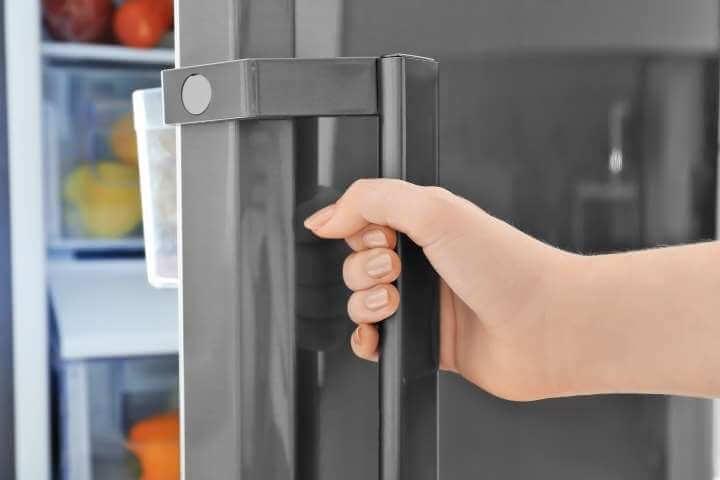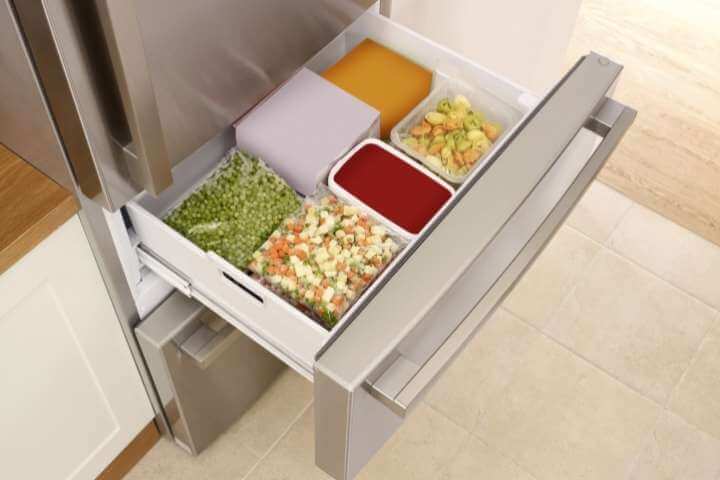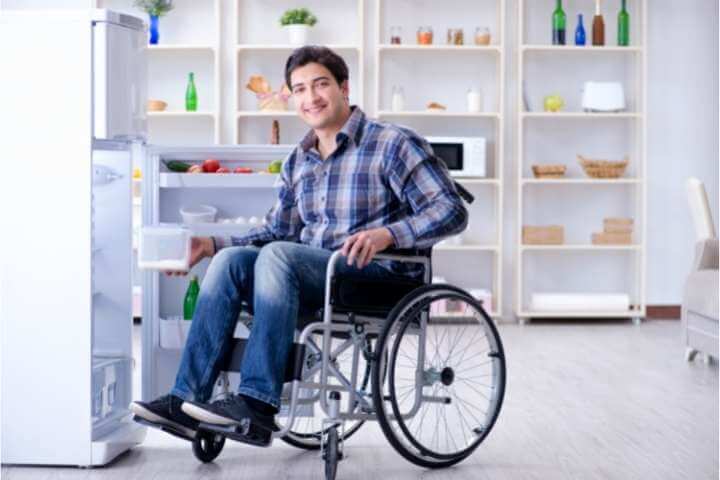The Americans with Disabilities Act was brought into law to help those with disabilities access businesses, public buildings and spaces without encountering any barriers.

Private residences were not included in this act because what happens in a person’s home is completely up to them, and there isn’t any major regulations as to what they can and can’t do.
However, following some or all of the guidelines that the ADA sets forth can make a person’s home much more welcoming to all of the people who may be visiting them.
Looking at refrigerators, the suggestions and guidelines set forth by the ADA cover everything about the unit: from the amount of floor space needed in front of the unit to where the controls need to be and how much force is required to be able to open the doors.
A Clear Approach
Within the ADA guidelines, it states that there has to be a clear space of 30 inches by 48 inches in front of the fridge in order for a person in a wheelchair to be able to access the fridge.
Additionally, one side of this space in front of the fridge must be adjoining or overlapping an accessible route – like a hallway or corridor that a wheelchair can access. This suggestion is waived if there is another, additional, space that is another 30 inches by 48 inches in size.
If the fridge is tucked away, the space in front of the fridge has to be expanded so that there is enough room for someone in a wheelchair or mobility assistive device to move around and still be able to get what they need from the fridge.
In short, there has to be enough room between the fridge and the rest of the kitchen so that someone in a wheelchair can open the fridge without any issue in accessing what’s in the fridge.
Accessing The Shelf Space
Under the ADA guidelines, the shelf space of the fridge has certain requirements as to how a person with a disability can access it.
The guidelines state that at least 50% of the fridge’s shelf space must be accessible to a person in a wheelchair in order for the fridge to be ADA compliant.
If a person approaches or accesses the unit from the front (like most refrigerators) then 50% of the shelf space in the fridge and freezer must be no higher than 48 inches off the floor.
Alternatively, if someone approaches the unit from the side then this same 50% of shelf space must be no higher than 54 inches off the floor and no lower than 9 inches off the floor.
Fridge Controls
Many modern fridges come with more controls than ever, and this can be difficult to operator for people with a disability.

In order for a fridge to be ADA compliant, all of the controls and handles on the fridge must meet section 4.27 of the act.
For example, the guidelines state that in order for the doors to open it can take no more than 5 lbs of force to do so.
Additionally, all of the controls must be able to be completely operational with just one hand, and they cannot require any tight grasping or twisting of the wrist.
The height, at the highest point of the controls, cannot be any more than 54 inches from the ground for a side approach fridge and 48 inches for a front approach one. Further, the controls have to be higher than 9 inches for a side approach and 15 inches for a front approach one.
Buying An ADA Compliant Fridge
As mentioned, there aren’t any penalties to private home owners if they don’t follow ADA compliance guidelines. It’s your home, you can make it be whatever you want, realistically.
It’s completely up to each person as to how they design their home, and the appliances they have in it.
However, if you choose to follow the guidelines it can make it much more welcoming to people who have disabilities.
When a home is accessible then it those friends and family who have disabilities or mobility issues will feel better about coming to your home. While they know that they are always welcome, it’s different coming to a home where it’s easy to get around and they don’t feel like they’re in everyone’s way.
Something as simple as ensuring that your fridge follows ADA guidelines means they can get their own glass of water or go to get their own food from the fridge.
This kind of independence is a huge deal for anyone who has a disability, and may feel as though they can’t access the homes of their family and friends.
Should You Get A Top Or Bottom Freezer?
If you’re thinking about ensuring the fridge in your home is ADA compliant, one of the decisions you’ll have to make is whether you get one with a freezer on the top of bottom.

It’s better to get one with the freezer on the bottom, for a couple reasons.
First, since heat rises it makes it much more economical to get one with the freezer on the bottom. These units will be easier on your utilities, overall.
Second, if you are storing heavy (or heavier) items in your fridge then it’s easier to get them out if the freezer is on the bottom. This also means that someone in a wheelchair doesn’t have to try and lift heavy, frozen items from the top of a fridge.
Less lifting, overall, for all family members is involved when purchasing a fridge with the freezer on the bottom.
Thankfully, the majority of fridges today already come with the freezer on the bottom so this is a very common feature you’ll find when shopping for a new fridge.
What to look for when purchasing a new fridge
The first thing you’ll need to consider is the size of the space you have for a fridge. Unless you’re building a brand new house, or completely renovating your existing home, you will probably be limited in the amount of physical space you have for this new fridge.
Next thing you’ll have to consider is if you want a built-in model or a free-standing one. This will probably be based on what you currently have, and the model you’re replacing. If you’re renovating a kitchen then you may have the option to pick something different, if you didn’t like what was previously in your kitchen.
From there, the model you pick will probably depend on the special features that you’re looking to have. If there’s something really specific to your wants and needs, you may be limited to only a few models to pick from.
if you have very few specifications then you’ll likely have many more options when you go shopping.
The best brands for ADA compliant refrigerators
When starting to look for a new fridge, you may be partial to certain brands. There are some brands that have produced better models than others to meet ADA regulations.
If you’re looking for a fridge that is ADA compliant, here are some of the recommended brands that have been purchased by families who need the accessibility.
Sharp
This brand is known for very robust appliances that work well with almost any home. The model SJG2254FS has been rated as one of the best ADA compliant fridges on the market.
It features an integrated water dispenser which is very convenient and it comes with a flex drawer than can be used for whatever your family needs most. The shelves for this fridge are adjustable so you can customize to whatever sizes you need for your food and groceries.
While this fridge may have a higher price point than some of the other comparable ones, it may be well worth it to make sure your family can access the fridge without any physical barriers.
LG
The model LFCS22520S by LG is sleek and modern while also being ADA compliant.
Additionally it has a linear compression motor and it uses fewer moving parts than a traditional fridge so it is quieter when running and will save you money on your energy bills every month.
It also has a factory installed ice maker so you’ll be ready for cold drinks any time you want.
This one is close to a middle price point, but with LG’s smart phone application you have control over your appliances and it will alert you to issues like when it’s time to change the water filter.

In summary
Buying a fridge that is ADA compliant is not going to be like making other changes in your home – there aren’t major renovations that need to be done to make an ADA compliant fridge.
These fridges are the same size, generally, as other ones so you won’t notice any difference in the space it takes up in your home.
When buying a new fridge, it may not say specifically that it’s ADA compliant but as long as you are aware of the regulations and the guidelines you can determine yourself if it will work.
